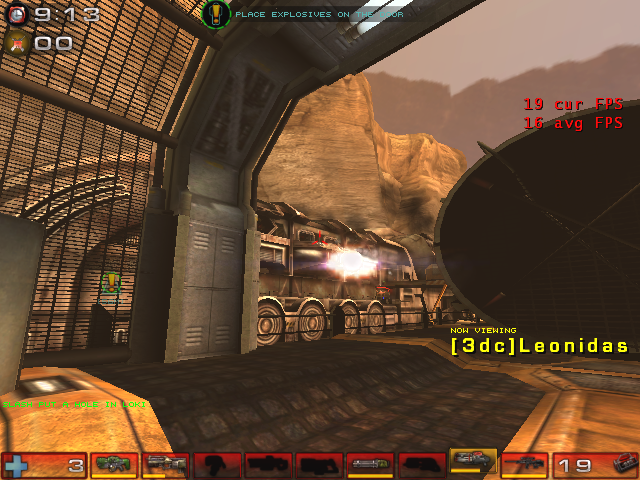|
[ black text - white links ] |
What is this:
- OpenGL apps running inside a Virtual Machine (VM) can use VMGL to take advantage of graphics hardware acceleration.
VMGL can be used on VMware guests, Xen HVM domains (depending on hardware virtualization extensions)
and Xen paravirtual domains, using XVnc or the virtual framebuffer.
Although we haven't tested it, VMGL should work for qemu, KVM, etc.
VMGL is available for X11-based guest OS's: Linux, FreeBSD and
OpenSolaris. Finally, VMGL is GPU-independent: we support ATI,
Nvidia and Intel GPUs.
 |
How to build:
If you cloned the repository or
downloaded the tarball:
- Copy the source into your guest (VM
or domain) and host (dom0, kernel hosting VMware, etc..)
- Type "make"
- In the guest, type
"make install-guest"
- In the host, type "make
install-host"
RPMs "should just work".
|
How to Use:
There are two broad types of guests
- Guest without a framebuffer using Xvnc:
restart vncserver after
installation.
- Guest with a framebuffer using Xorg:
modify Xorg configuration in the guest to include the vmglext module,
i.e.
- in
/etc/X11/xorg.conf:
-
Section "Module"
-
...
-
Load "vmglext"
-
...
- and
restart Xorg.
-
- Then, for
all types of guests,
connect from the host to the domain using a viewer:
- Vncviewer for guest with Xvnc, Xen
paravirtual guest with vncfb, or Xen HVM guest with vnc qemu-dm
output.
- We provide a patch to enable sdlfb
for Xen paravirtual guests, and qemu-dm with sdl output for Xen HVM
guests.
- After
authentication the viewer will output:
-
"Set GLSTUB var in the guest to point to port
<something>"
- Usually
<something> is 7001. In the guest
set the environment variable
-
GLSTUB = <host_hostname>:<port_viewer_told_you>
- and
things should work.
-
- You can
also use VMGL with X forwarding, regardless of the type of guest.
Start stub-daemon in the host, enable X forwarding from guest to
host, and set GLSTUB in the guest to <host_hostname>:7000. Try
your GL apps now.
-
- CAUTION:
In all cases, ports in the range of the 7000's have to remain open
between guest and host.
-
- NEW, VMware:
Is not easy to compose the 3D output on VMware's closed source GUI. Your best bet is to "guess" the XID of
the GUI window and pass it to stub-daemon with the -v switch. This link
will provide you with a tiny library I use to interpose bteween
VMware's GUI and X and find out the XID's used. I recommend you use
vnc or X forwarding to bypass this problem altogether.
How to get Xen dom0 GPU kernel modules:
- A separate prerequisite for Xen is to
enable direct rendering on your dom0. You can check this by looking
into the output of glxinfo.
- I am not providing links here since SourceForge maintains an "open source-only policy". Refer to my original page for references.
Capabilites
Roughly speaking, OpenGL up to version
1.5 is supported (sorry, no 2.0 shading languages,) with the following
exceptions:
- OpenGL 1.2 imaging functions related to histogram, min/max, convolution
and colortables (like you really needed them...)
- Display lists aren't fully
conformant: GL_COMPILE_AND_EXECUTE mode may not work reliably, specifically if there
is a glGet* call between glNewList and glEndList which gets state that
was set by a previous command compiled/executed inside the display list.
Roughly speaking (deja vu) GLX version
1.3 is supported, with the following exceptions:
- glXCopyContext
- glXCreateGLXPixmap
- glXDestroyGLXPixmap
- glXWaitGL
- glXWaitX
- None of the GLX 1.3
functions related to Pbuffers or visual configs are implemented.
For more in-depth info, look into cr/doc/conformance.html
and cr/glapi_parser/APIspec.txt in the source tree, or /usr/share/doc/xen-gl/cr/conformance.html
if you've used an rpm.
Other stuff
This project has been graciously
sponsored by Google
through their Summer
of Code 2006 program, with mentoring by Dave Scott and Anil
Madhavapeddy from Xensource.
Here
is the original project proposal.
The code is distributed under the Modified
BSD licence (listed in the "General" section of the
hyperlink.) Other Free Software licences apply as specified by the
authors of code reused in the context of this project.
References:
Last Updated May 27, 2008
|

